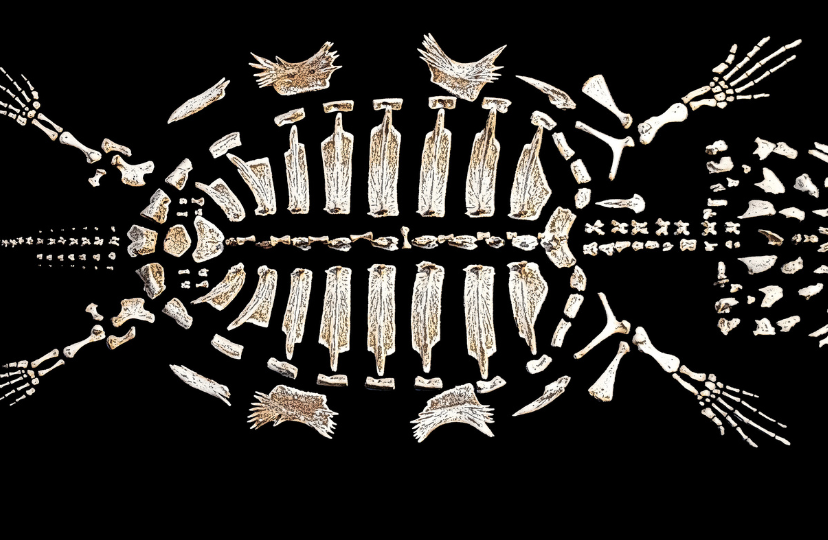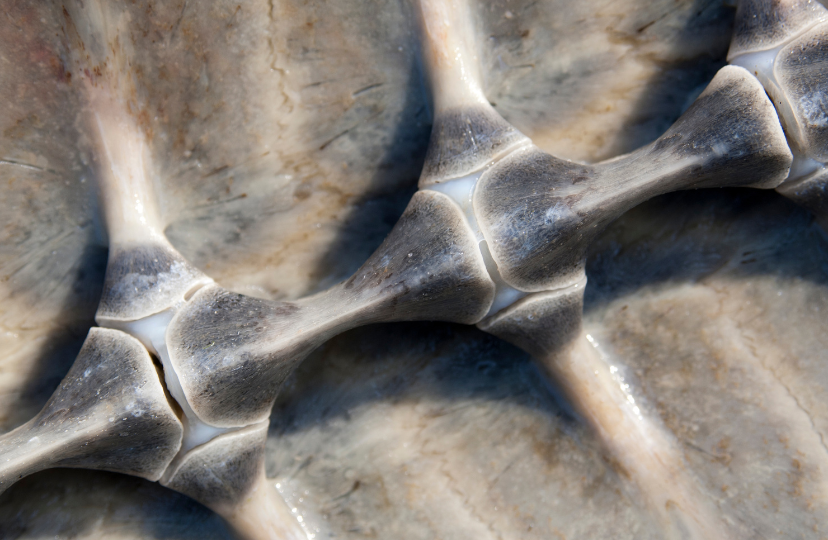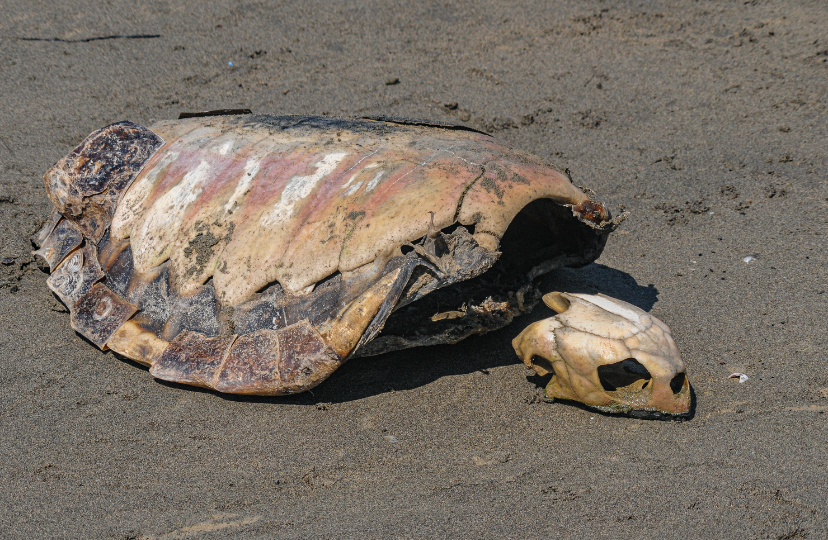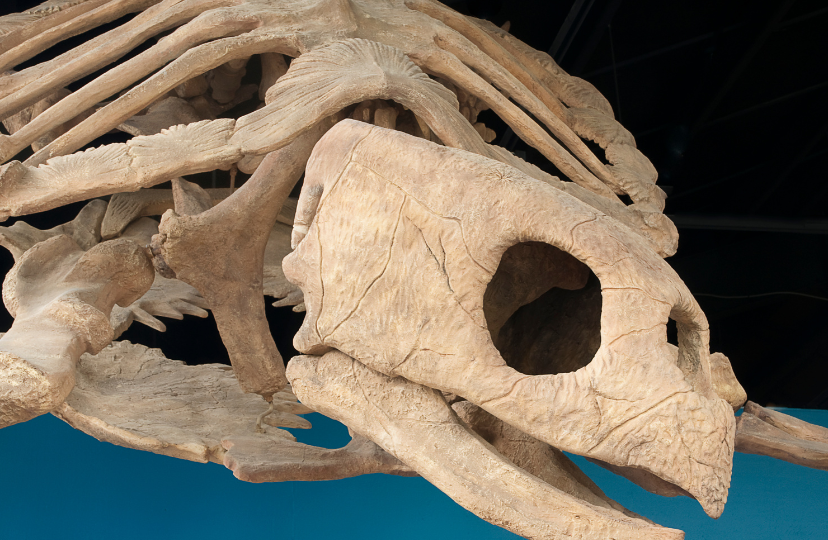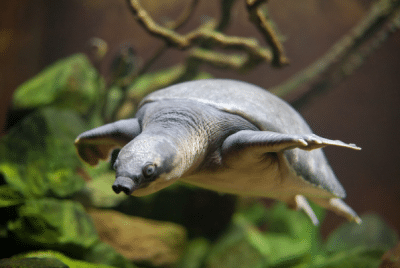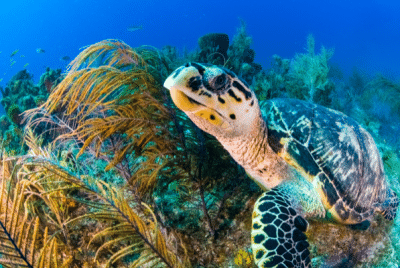Turtle Skeleton: A Marvelous Design
My fellow turtle-holics! Have you ever pondered the intricacies of the turtle skeleton? It’s more than just a rigid framework; it’s a masterpiece of evolution and function. Let’s embark on this anatomical adventure and unearth the secrets behind these shelled wonders!
An Introduction to the Turtle’s Framework
Why It’s Fascinating
Imagine donning armor every single day of your life. That’s what it’s like for turtles. Their skeleton isn’t just bones; it’s a fusion of protection, function, and evolutionary history. Quite fascinating indeed!
Basic Structure Overview
Before diving deep, let’s get our basics right. When delving into the marvels of turtle anatomy, one quickly realizes the sheer brilliance of nature’s design. The turtle’s skeleton, a masterclass in both protection and function, is primarily divided into two significant components: the outer shell and the internal bone structure.
Outer Shell
An emblematic feature of these magnificent creatures, is an evolutionarily perfected armor, meticulously crafted for defense. Comprising the upper carapace and the lower plastron, this bony shield is not merely a superficial layer. It’s interwoven with the turtle’s vertebrae and ribs, demonstrating nature’s unparalleled fusion of form and function. This protective exoskeleton safeguards turtles from potential threats, be it cunning predators in the wild or unforeseen dangers in diverse habitats.
Internal Bone Structure
On the other hand, the internal bone structure of turtles is a testament to their adaptability and resilience. Similar to other vertebrates, it consists of a spine, skull, limb bones, and other vital components, each playing a pivotal role in the turtle’s locomotion, feeding, and overall physiology. Interestingly, while their legs might seem modest, they are either powerfully webbed for propelling through waters or sturdy enough to support their weight on land.
The intricate balance between the hardy outer shell and the robust internal framework equips turtles with the strength and agility they need to thrive in their respective environments. So, the next time you’re mesmerized by a turtle’s serene glide in the water or its measured pace on land, remember – it’s not just an act of nature; it’s a showcase of an evolutionary masterpiece encapsulated in its skeletal wonder.
Delving Deeper into the Anatomy of the Turtle Skeleton
The Carapace: Nature’s Shield
The carapace in turtles and tortoises is undoubtedly one of the most defining and intriguing features. Serving as a formidable shield, this bony exterior doesn’t just offer protection; it’s a testament to nature’s ingenuity and evolutionary artistry. For anyone enamored with the world of chelonians, understanding the carapace is diving deep into their life’s blueprint.
For turtles, the carapace has evolved as a sleek, slightly flattened structure, aiding their aquatic escapades, allowing them to glide seamlessly in water. Their scutes (the outer plates on the carapace) are often streamlined, aiding in minimizing resistance while swimming.
On the other hand, tortoises, the land-dwelling counterparts, sport a more domed carapace, which acts as an effective shield against terrestrial predators. But it’s not just about protection or mobility; the carapace plays a vital role in thermoregulation. Turtles and tortoises, being ectothermic, rely heavily on external sources for regulating their body temperature. Their carapace, by absorbing sunlight or seeking shade, helps them maintain optimal body temperatures.
Furthermore, each carapace tells a story; the growth rings on the scutes can give insights into the age of the animal, much like the rings of a tree. The intricate patterns and colors, meanwhile, often act as camouflage, blending them seamlessly with their surroundings.
In essence, the carapace of turtles and tortoises is a marvel of natural engineering – a fusion of form, function, and evolutionary finesse. So, the next time you marvel at these shelled wonders, remember you’re looking at millions of years of nature’s craftsmanship embodied in one singular, magnificent structure.
The Plastron: More Than Just a Base
Flip a turtle (gently, of course!), and you’ll find the plastron. While many are easily enamored by the domed carapace that forms the iconic upper shell, the plastron — the underside — holds equal intrigue. Serving as the belly armor for these shelled reptiles, the plastron offers a protective barrier against potential threats from below.
Its role isn’t purely defensive, though. The plastron’s intricate design is often species-specific, providing clues to a turtle or tortoise’s habitat and lifestyle. For instance, aquatic turtles might sport a more streamlined plastron to aid in their watery navigations, while some tortoises have a hinged plastron that allows them to tightly tuck themselves in, ramping up their defense against predators.
Additionally, in certain species, the plastron can assist researchers and enthusiasts in determining gender. Often, male turtles might have a slightly concave plastron, facilitating easier mating. Beyond its functional roles, the plastron’s rich vascular network has sparked interest in scientific communities.
Researchers are investigating its potential role in thermoregulation, given that turtles and tortoises are ectothermic creatures, relying on external sources to regulate body temperature. In essence, the plastron isn’t just a passive shield; it’s a dynamic component of chelonian anatomy, reflecting millions of years of evolutionary fine-tuning.
Whether you’re a budding herpetologist, a curious nature enthusiast, or someone simply captivated by the slow grace of these creatures, understanding the plastron offers deeper insight into the lives of turtles and tortoises — a true testament to nature’s genius in design and function.
Turtle Skeleton vs Tortoise Skeleton: Spotting Differences
When diving into the world of shelled reptiles, one quickly discovers the captivating nuances that set turtles and tortoises apart, especially when it comes to their skeletal structures. At a glance, both might seem to carry the same bony architecture, but delve a little deeper, and the differences are both intriguing and illuminative.
Turtles, primarily aquatic beings, possess a skeleton that’s tailored for a life of swimming. Their shells are generally flatter, streamlined to enhance hydrodynamics, allowing them to glide effortlessly through water. The bones in a turtle’s limbs are elongated, and more often than not, they boast webbed feet or even flipper-like structures, enabling powerful aquatic propulsion.
On the other end of the spectrum, tortoises, the land-dwelling cousins of turtles, exhibit a dome-shaped carapace, which might remind one of a walking helmet. This domed structure is an adaptation for terrestrial life, offering them an added layer of protection from potential predators that might try to flip them over. Additionally, the legs of tortoises are not designed for swimming but instead resemble stout pillars, robust and sturdy, perfect for supporting their weight on land. Their feet are often thick and elephantine, devoid of any webbing, and adept for walking on rough terrains.
At its core, while both turtles and tortoises wear their skeletons on the outside in the form of protective shells, the subtle disparities in their skeletal designs are a testament to nature’s genius, ensuring each is perfectly equipped for its respective habitat. Whether it’s the sleek, water-ready frame of the turtle or the rugged, earthy build of the tortoise, these skeletal differences narrate a story of evolution, adaptation, and nature’s unparalleled craftsmanship.
Evolutionary Wonders: How the Turtle Skeleton Adapted
Throughout the annals of Earth’s natural history, few creatures have showcased such an impressive evolutionary journey as the turtle. Ancient turtles, tracing back to over 220 million years ago, began their tale with a skeletal framework vastly different from the iconic shelled reptiles we recognize today.
Early specimens from the Triassic period, like the Proganochelys, lacked the ability to retract their heads, and their shells were adorned with spiky extensions, suggesting a world teeming with potential predators. The initial skeletal shifts involved the broadening and fusing of ribs, laying the groundwork for what would eventually evolve into the modern turtle’s protective carapace.
As millennia passed and ecosystems transformed, so did the turtle’s armor. The once rudimentary shell became more streamlined and robust, offering enhanced protection. Additionally, the evolutionary dance saw the plastron—the underside of the shell—become more intricate, providing a sturdier base and shelter for the soft underbelly.
Changes weren’t confined to just the shell; even the limbs and vertebrae of these ancient reptiles underwent refinements, adapting them for diverse habitats, from freshwater habitats to vast oceans. Interestingly, while most animals evolved to increase their mobility and speed, turtles, through their skeletal evolution, seemingly took a ‘slower’ path, betting on defense over agility. This strategy proved successful, as evidenced by their expansive global distribution and the varied species we see today. Reflecting on this evolutionary odyssey offers not just a window into the turtle’s past but a testament to nature’s incredible ability to innovate and adapt in the face of ever-shifting challenges.
Understanding the Role of the Skeleton in a Turtle’s Life
Protection and Predators
The turtle skeleton, a marvel of evolutionary design, serves as the primary line of defense against the myriad of threats these creatures face in their natural habitats. The turtle’s shell, an integral part of its skeletal system, is a fusion of the spine, ribcage, and dermal bones, creating a rigid and durable armor.
As previously mentioned, the shell’s upper part, known as the carapace, and the lower segment, called the plastron, work in tandem to offer a near-impenetrable barrier. When predators loom, turtles can retract their sensitive head, legs, and tail inside this bony fortress, minimizing exposed flesh. This retraction ability makes it incredibly challenging for predators like birds, raccoons, or large fish to harm the turtle. The skeleton’s design, while primarily for protection, is also a testament to nature’s adaptability.
Over millions of years, the turtle’s bone structure has refined itself to withstand varying degrees of threats, ensuring their survival in diverse environments, from land to sea. In essence, the turtle’s skeleton isn’t just bone; it’s a blend of nature’s engineering and evolutionary prowess, ensuring their longevity in the wild.
Movement and Lifestyle
Whether it’s a sea turtle gliding gracefully in the ocean or a tortoise lumbering on land, the skeletal structure plays a pivotal role. The turtle skeleton is a marvel of nature that goes beyond mere protection. While it’s common knowledge that the turtle’s shell serves as a shield against predators, its role in facilitating mobility is often overlooked.
Intricately intertwined with the turtle’s musculature, the skeleton is central to its every movement. The ribs, instead of being inside the body, are uniquely fused with the carapace – the top part of the shell. This fusion means that turtles can’t expand their chests to breathe like other creatures; instead, they have specialized muscles that pump air in and out of their lungs. More so, the skeleton’s design, with its broad, flat bones and joint articulations, empowers aquatic turtles with streamlined bodies, enabling swift and graceful swimming.
On land, the tortoise, a turtle relative, has a dome-like carapace and stout limbs that aid in bearing its weight and facilitating terrestrial movement. Every aspect of the turtle’s skeletal structure, from the curvature of its shell to the length and flexibility of its limbs, has evolved over millennia, optimizing mobility across varied terrains. This balance of protection and mobility is a testament to nature’s genius in skeletal design.
Conclusion
In the grand tapestry of nature, the turtle stands out as a testament to evolutionary perfection. The awesome turtle skeleton is more than just a structure; it’s a story of adaptation, survival, and natural wonder. So, the next time you spot a turtle, take a moment to appreciate the marvel that lies beneath its shell.
Fun Facts about the Turtle Skeleton!
- Built-in Armor: Unlike most animals, a turtle’s spine is actually fused to its shell. This means turtles cannot crawl out of their shells like some cartoons might suggest. Their shells are a permanent part of their anatomy!
- Breathing Mechanism: Because their rigid shells don’t allow for chest expansion like in mammals, turtles have a unique way of breathing. They use specific muscles within their shells to pump air in and out of their lungs.
- No External Ear Opening: While turtles have a keen sense of hearing, they lack an external ear opening. Instead, their middle and inner ear structures are protected by a bony covering, which is a part of their skull.
- Ancient Design: The basic design of the turtle’s skeleton has remained relatively unchanged for over 200 million years! Fossil records showcase ancient turtles that have a recognizably similar skeletal structure to their modern counterparts.
- The Mystery of the Missing Teeth: Modern turtles don’t have teeth. Instead, they have a sharp beak. However, their ancestors, millions of years ago, did have teeth. Over time, evolution led to the replacement of teeth with a more beak-like structure, better suited to their diets and lifestyle.

